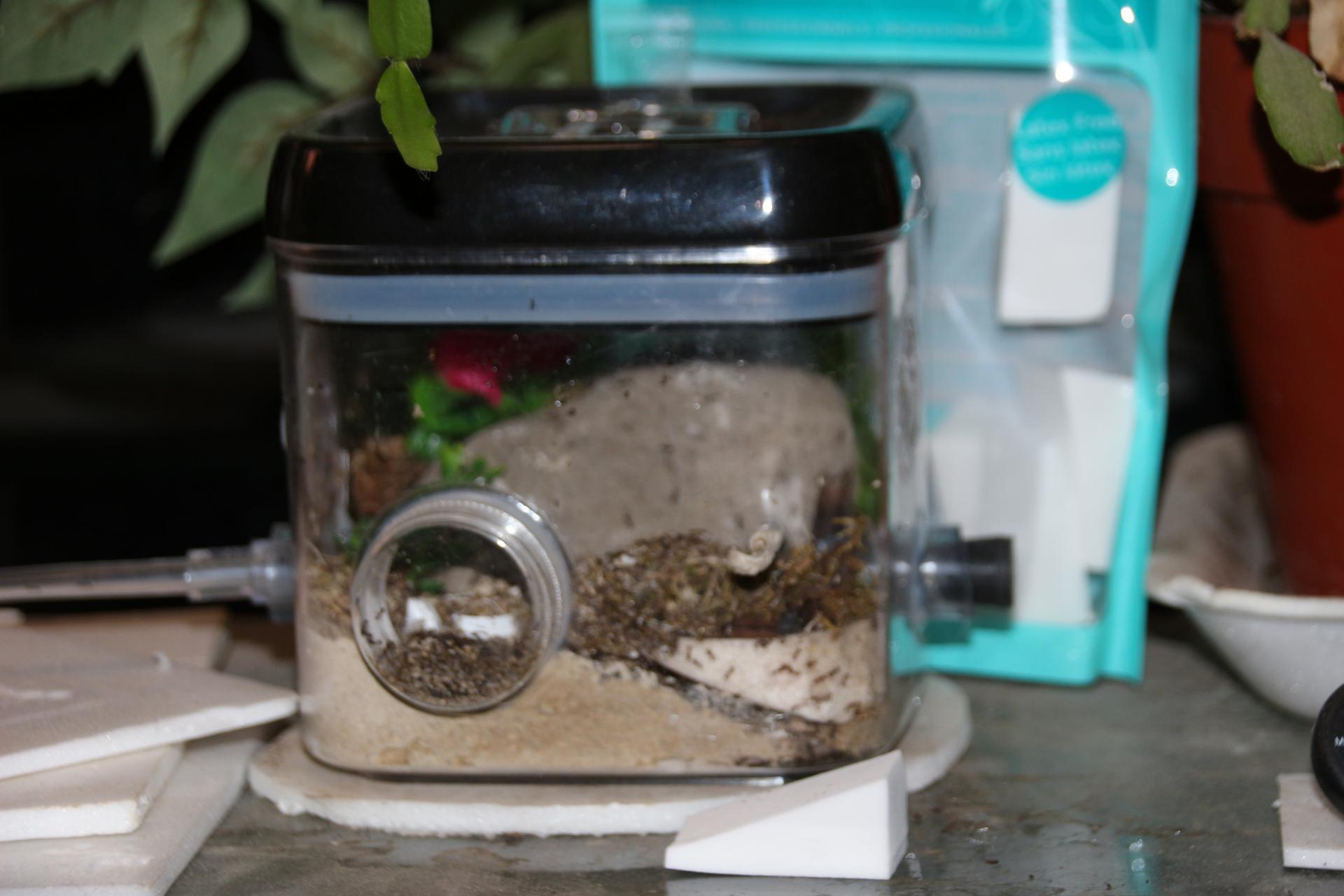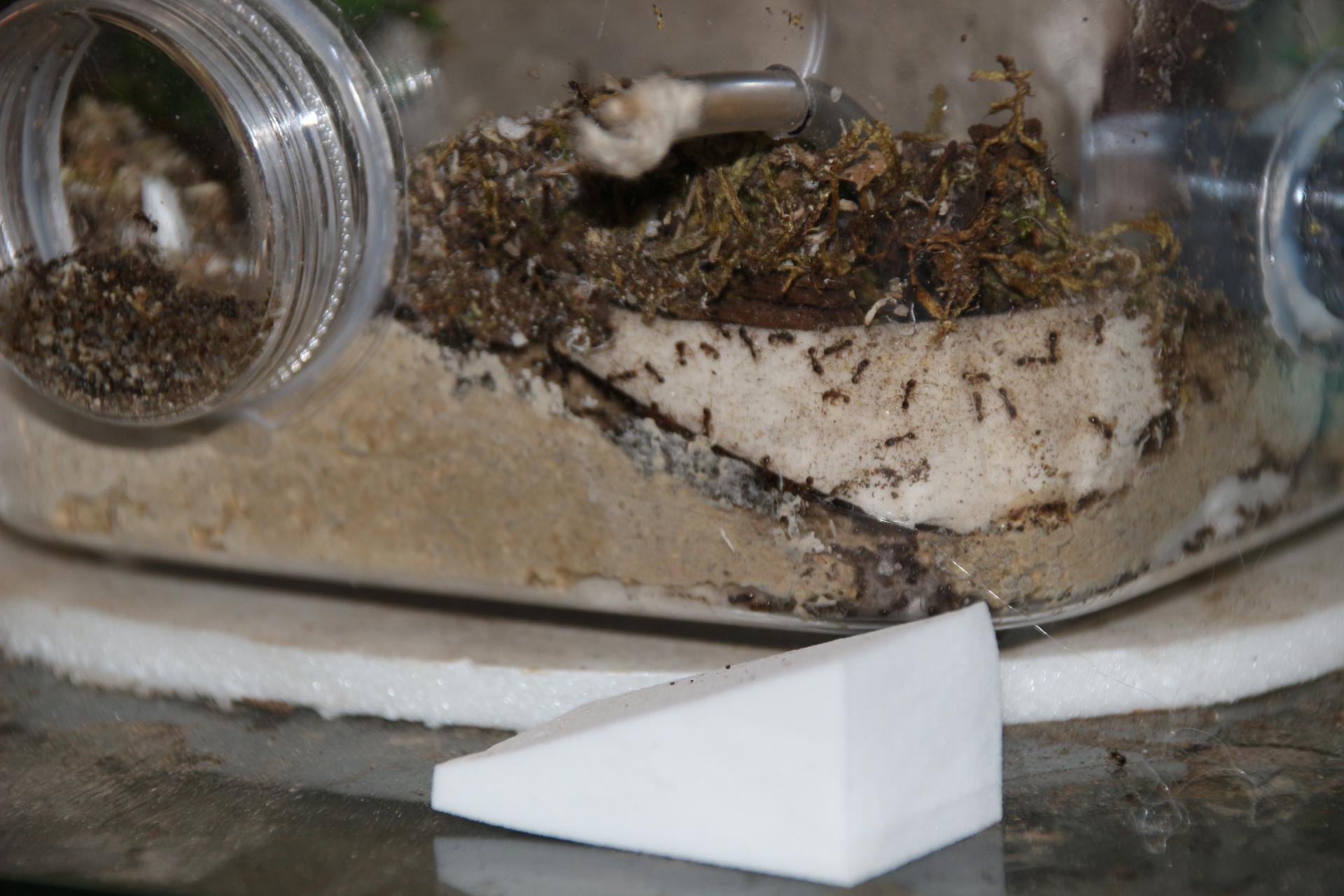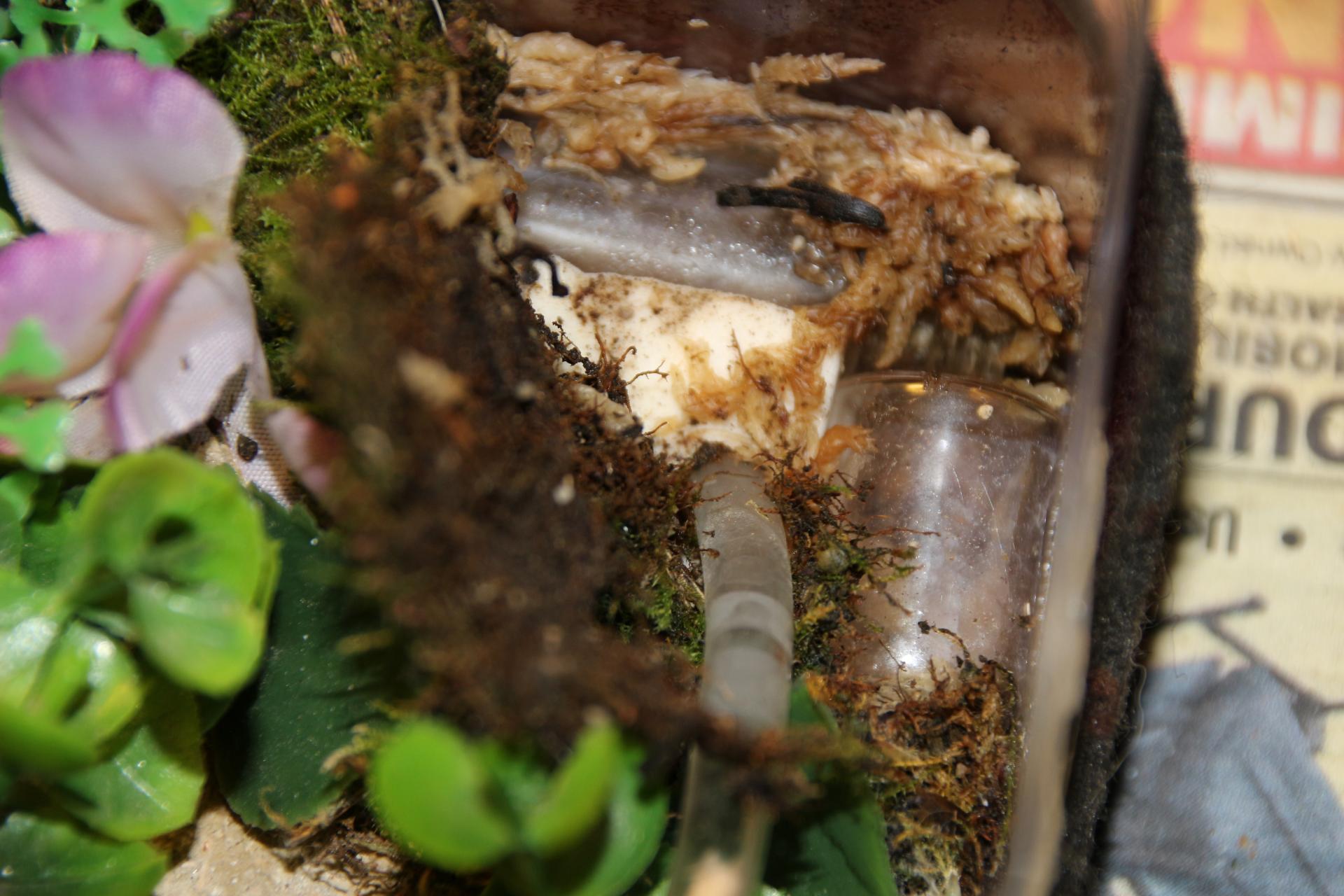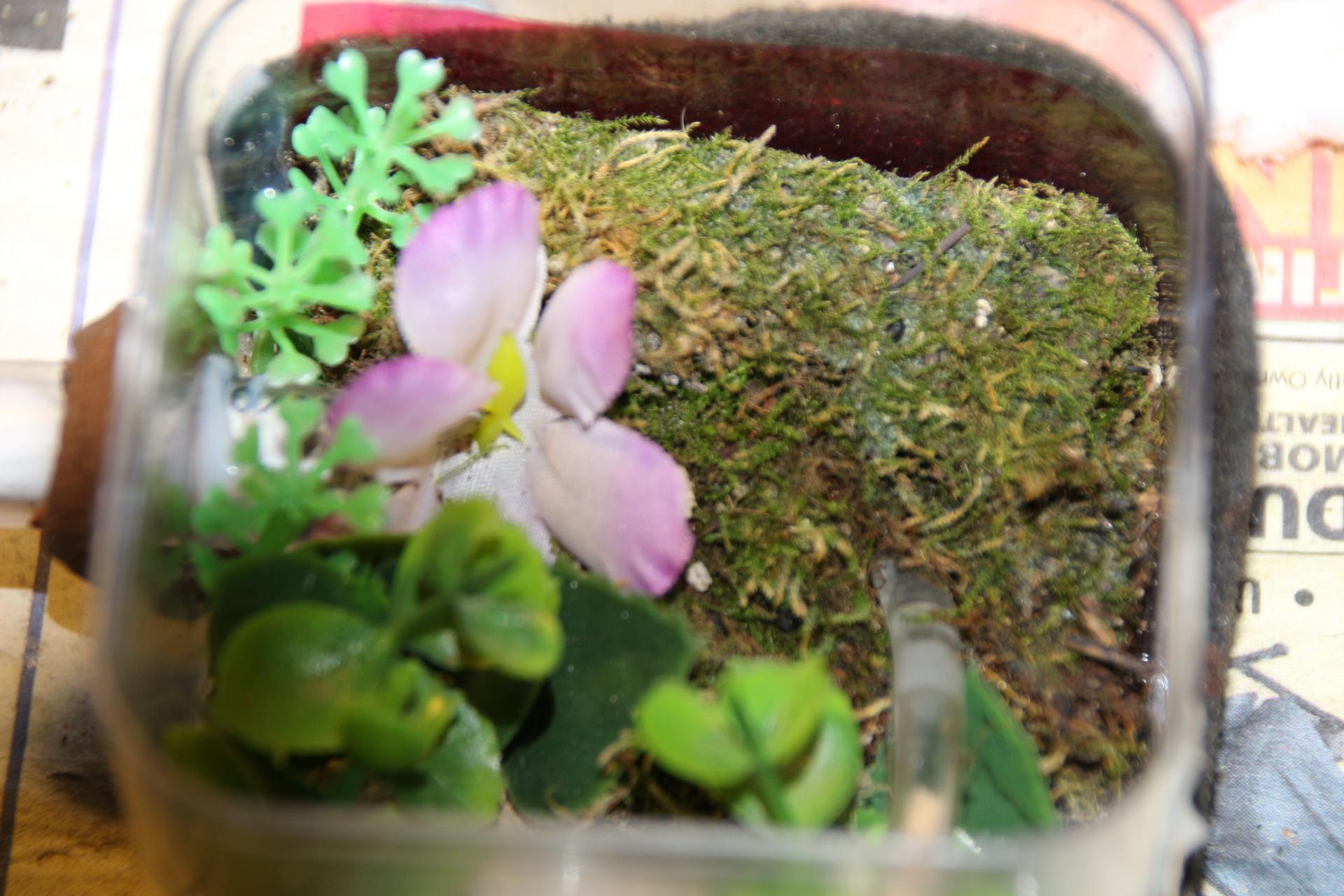- Formiculture.com
- Forums
- Gallery
- Members
- Member Map
- Chat
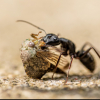
Hydrating DIY grout nests
Started By
FelixTheAnter
, Apr 5 2023 3:33 AM
7 replies to this topic
#1
 Offline
-
Posted April 5 2023 - 3:33 AM
Offline
-
Posted April 5 2023 - 3:33 AM
I've been looking at tutorials for making my own grout nest. I have a frame built and am almost ready to start, but I'm wondering about hydration. Specifically, the method of using chamois cloth between layers of grout.
Does it have to be chamois cloth? Or will any sort of cloth work? My local grocery store sells these cheap "viscose" cleaning cloths that are super absorbent. They also sell "sponge cloths" which again, thick and absorbent. Can I use something like this? Anyone tried other types of cloths besides chamois?
Does it have to be chamois cloth? Or will any sort of cloth work? My local grocery store sells these cheap "viscose" cleaning cloths that are super absorbent. They also sell "sponge cloths" which again, thick and absorbent. Can I use something like this? Anyone tried other types of cloths besides chamois?
#2
 Offline
-
Posted April 5 2023 - 4:47 AM
Offline
-
Posted April 5 2023 - 4:47 AM
Make a water tower by melting 100 micron mesh onto a small plastic container. Drill a hole with a thin straw in the side to refill it. It will be infinitely more consistent and reliable than chamois cloth.
- Lazarus likes this
"The ants are a people not strong, yet they prepare their meat in the summer." Prov. 30:25
Keep ordinary ants in extraordinary ways.
Keep ordinary ants in extraordinary ways.
#3
 Online
-
Posted April 5 2023 - 5:49 AM
Online
-
Posted April 5 2023 - 5:49 AM
To increase the absorbency of grout, add vermiculite to the mix. I've described this in more detail in the Formicaria and Outworlds section. It absorbs water and I add it at a fairly high rate. Many ants can chew through it if I want them to make their own tunnels. I've stopped making water towers and switched to using pieces of highly absorbent cosmetic sponge with an attached tube for hydration. When the sponge is saturated, water runs out the bottom. Ants can drink from the bottom of the sponge until it's dry, much better than drinking from the top of a water tower. I bury the sponge in the grout so it hydrates the grout and humidifys the nest.
To answer your question directly, I have used the sponge cloths for a similar purpose and found that after being saturated for a long time they turn to mush and aren't as effective. Also, I found that in this condition, once dried, it's very difficult to rewet.
To answer your question directly, I have used the sponge cloths for a similar purpose and found that after being saturated for a long time they turn to mush and aren't as effective. Also, I found that in this condition, once dried, it's very difficult to rewet.
My father always said I had ants in my pants.
#4
 Offline
-
Posted April 5 2023 - 11:08 AM
Offline
-
Posted April 5 2023 - 11:08 AM
Water towers are not for drinking purposes.To increase the absorbency of grout, add vermiculite to the mix. I've described this in more detail in the Formicaria and Outworlds section. It absorbs water and I add it at a fairly high rate. Many ants can chew through it if I want them to make their own tunnels. I've stopped making water towers and switched to using pieces of highly absorbent cosmetic sponge with an attached tube for hydration. When the sponge is saturated, water runs out the bottom. Ants can drink from the bottom of the sponge until it's dry, much better than drinking from the top of a water tower. I bury the sponge in the grout so it hydrates the grout and humidifys the nest.
To answer your question directly, I have used the sponge cloths for a similar purpose and found that after being saturated for a long time they turn to mush and aren't as effective. Also, I found that in this condition, once dried, it's very difficult to rewet.
"The ants are a people not strong, yet they prepare their meat in the summer." Prov. 30:25
Keep ordinary ants in extraordinary ways.
Keep ordinary ants in extraordinary ways.
#5
 Offline
-
Posted April 5 2023 - 11:13 AM
Offline
-
Posted April 5 2023 - 11:13 AM
Thanks for the info guys. @Drew can you explain how those water towers work? I don't really understand how they hydrate the nest - the ants can't access the water, and the water also doesn't touch the grout?
#6
 Offline
-
Posted April 5 2023 - 11:32 AM
Offline
-
Posted April 5 2023 - 11:32 AM
Water evaporates through the mesh to keep nest humidity high. Drinking water is provided elsewhere, usually in the outworld. Directly hydrating a nest is a really antiquated and unreliable technique in my opinion.
"The ants are a people not strong, yet they prepare their meat in the summer." Prov. 30:25
Keep ordinary ants in extraordinary ways.
Keep ordinary ants in extraordinary ways.
#7
 Online
-
Posted April 5 2023 - 10:57 PM
Online
-
Posted April 5 2023 - 10:57 PM
Let me add a few more details about my hydration system that may be useful to you. You will find a detailed description of how I mix the grout and vermiculite at Pictures of Formicariums and Outworlds - Page 41 - General Ant Keeping - Ants & Myrmecology Forum (formiculture.com) (If this doesn't work I apologize). I have posted a picture below of how I now use sponges to replace water towers. The first picture shows how I used a sponge in the outworld of a Tetramorium colony. The sponge in the foreground is the same as the one in the outworld, and the package they came in is in the background. I bought them at a Dollar Store and they are called absorbent cosmetic sponges.
They hold an amazing amount of water, in fact, you can see them swell as you fill them. I feel the inability of a water tower to supply water to the ants and hydrate the grout is a critical flaw in that system. You can see from the close-up that the ants are drinking from the sponge. I can tell when it's dry when I see many more ants desperately trying to get water. Although this isn't an example of a sponge being used inside the nest, you can imagine how you could position it and then put grout around it instead of a water tower.
Another advantage of the sponge is that when it's saturated, water flows out the bottom of the sponge, not over the top as it does in a water tower which can freak out some of my jittery colonies. I use a cotton pad on the bottom to link the sponge with an oasis in the outworld. The oasis is usually another piece of sponge covered in moss that is always kept moist.
This is a picture of a small founding formicarium where I put a sponge in the middle and tubes for nesting alongside it. Sponge is much more versatile because you can cut it to any shape and fit it into places where a water tower cannot go. I cover the whole thing with moss and when I hydrate the sponge, I just watch for water coming out the bottom and job done. I also use small pieces of the same kind of sponge to feed sugar/water and drinking water to all my colonies. They are so absorbent that they hold a lot while the ants can't drown in it. I also cut pieces to fit in a test tube and use them to replace a cotton plug when feeding sugar/water. Although they don't slide down the test tube like cotton sometimes does as the ants drink the water, it does conduct the sugar/water and ants can empty the tube.
When I start planning a new build, hydration is one of the main considerations. I have found that these sponges offer versatility in size and shape, hold an amazing amount of liquid, and not only humidify the nest but can also hydrate grout and provide water to the ants. I'm not sure if ANTdrew considers this directly hydrating a nest, but it seems to satisfy many of the needs of my ants.
RPT
- UtahAnts and AntsGodzilla like this
My father always said I had ants in my pants.
#8
 Offline
-
Posted April 7 2023 - 1:00 AM
Offline
-
Posted April 7 2023 - 1:00 AM
Interesting, I like seeing the different methods. I'm assuming you can use both of these methods with Ytong as well? I have a couple big blocks that I've yet to carve, maybe I'll try making some little nests for my new Lasius Umbratus colonies with both of these methods, and seeing which I & the ants prefer 😁
0 user(s) are reading this topic
0 members, 0 guests, 0 anonymous users






